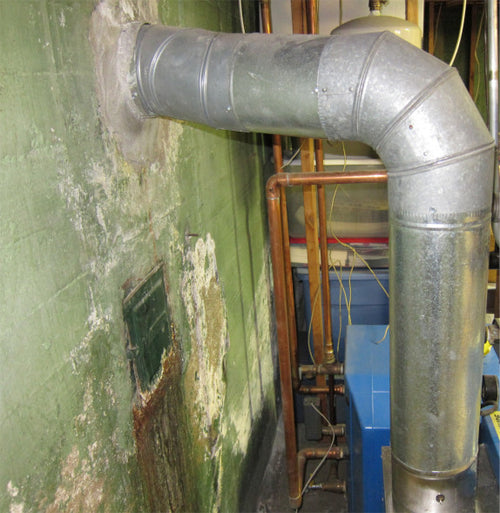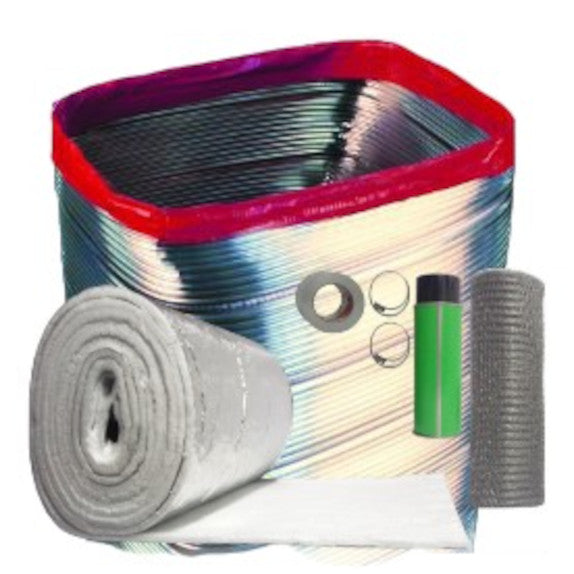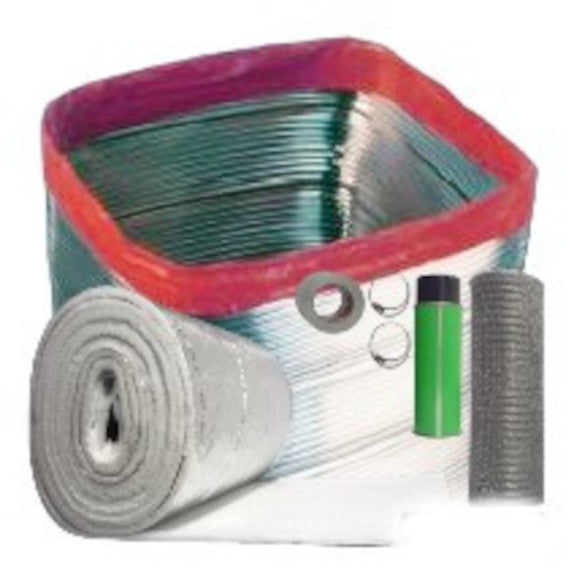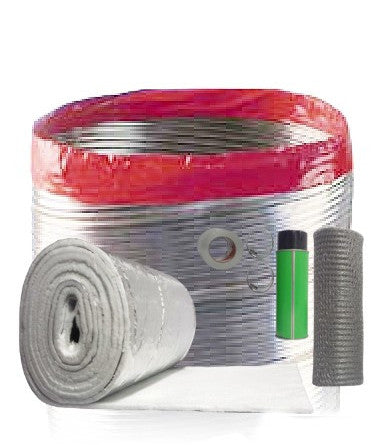Properly Sizing a Chimney Liner for Gas or Oil Appliances
July 19, 2023

What Causes Moisture in my Gas / Oil Chimney?
Is your chimney leaking when it doesn't rain? If it is, it's likely caused by excessive condensation from a gas furnace or oil boiler. If the flue size is too large for an appliance, it will cause the exhaust gas to condense more quickly creating a lot of moisture in the chimney.
Over time, this excessive moisture can cause the flue to deteriorate. The easiest fix for this is to install a stainless steel chimney liner. But not just any liner will work for your appliance. An undersized chimney liner for a boiler or furnace will cause a limit switch to trip, turning the appliance off. Understanding what measurements and what information you need is crucial for a safe and successful installation.
Measurements Needed for a Properly Sized Chimney Liner
The first item on the list that we need to determine is what type of appliance you have and how many appliances vent into the chimney. It is very common for a gas furnace and hot water heater to exhaust into the same chimney. While oil appliances generally vent into the chimney alone. Note: It is never a good idea to have two different fuels exhaust into the same chimney.
The next item to identify is the BTU capacity for gas appliances and finding the gallons per hour (GPH) firing rate for oil appliances. This information is generally located on the specification panel on the appliance. Most of the time the specs panel is on the access door to the burners. This is the absolute most important piece of information in order to size a liner for a gas or oil appliance. Usually furnaces and boilers will have an exhaust hole that is much smaller than what liner size is required. TIP: Never size a liner based on the size of the exhaust for gas or oil appliances.
Once we have the BTUs and the GPH, the next item to address is to count the amount of elbows that are in the connector pipe that goes from the appliance to the chimney. Each 45 degree elbow in the connector pipe will reduce the max BTU and GPH capacity by 5%. For each 90 degree elbow in the connector pipe, it will reduce the max BTU and GPH capacity by 10%. A connector pipe should never have more than 3 total 90 degree elbows in the system. We also need to measure the lateral length form the appliance to the chimney.
The final measurement we need to determine the correct size liner is the height of the chimney. Measure from the top of the chimney to the top of the thimble and add 3.5" to accommodate the liner clamping to the top plate. Next, measure the exact inside flue measurement that you will be installing the liner down. This will tell you if the correct size liner will fit down your flue. Never make an assumption of the inside measurements of your flue. Always measure the flue.
Measurement Form for Parts List
Here is a link to our measuring form. You can fill this form out and it will provide us the information to put together a parts list for you. Or, call a Rockford Chimney Supply Certified Technician to assist you in selecting the correct size liner.
DIY Center
(AKA ‘The Rockford Files’)
From video tutorials to product walkthroughs, we have a variety of DIY resources just for you! Click the button below to view our entire library.








